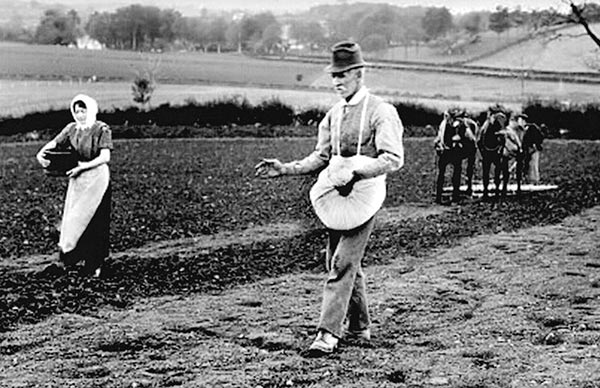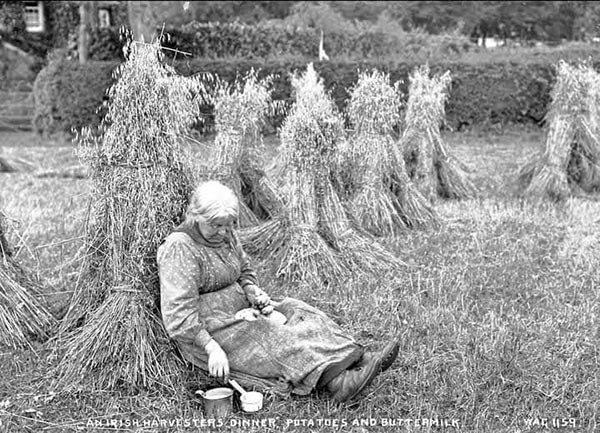As the Hertford Estate developed during the 17th, 18th and 19th centuries, the residents of Aghalee Parish (both planters and native Irish) became tenants of the successive Earls of Conway, and later of the Marquesses of Hertford. By 1869, the 4th Marquess (by then Lord Hertford) had become one of the county’s greatest landowners. His agent, the Very Rev James Stannus, recorded that the Hertford Estate comprised 66,000 acres, supporting a population of about 200,000.
There were 4,000 holdings within the Hertford Estate, of which 1,000 were leasehold and the remainder let on a yearly basis. Most holdings were quite small (5-20 acres) with only a handful of larger farms (60+ acres) in each townland.

As part of their tenancy agreement, most tenants were required to improve the standard of their holdings by building a ‘sufficient dwelling house’ within five years, by planting an orchard, and by planting rows of trees ‘not more than 20 feet apart’ along all boundaries and cross-ditches.
Life in Aghalee Parish has always been mostly rural and agricultural in nature. The Ordnance Survey memoirs (1832) give us a flavour of this: ‘Nearly all the land is arable – a fine, rich clay capable of producing the finest crops. The usual mode of culture is to break up the grasslands for potatoes. Wheat succeeds, then oats … sometimes barley is sown. The artificial grasses raised are clover and rye-grass. The manure is lime, gravel and the produce of the farmyard.’
Other crops have been grown at times. In the mid1930s a trial was carried at W.D. Best's farm to grow tobacco in Aghalee; not surprisingly, it failed due to lack of sunshine. More recently, rapeseed has become a popular crop – much to the alarm of hay-fever sufferers!
Mixed farming has been common throughout the parish, with most farms keeping at least a few dairy cattle. Later, larger herds of dairy and beef cattle were established, and more recently larger scale farming of pigs and chickens has been introduced. Although there was a small woollen trade here in the C17th, sheep-farming has not been as wide-spread here as in other parts of the country.

For those living along the lough shore, fishing traditionally provided a livelihood and turf-cutting has often provided an income for those living in the townlands close to the lough.
Another important cottage industry was basket-weaving; the baskets being made from willow osier rods grown along the lough. Francis McCorry writes: ‘Few districts could rival the Lough Neagh shore area of south-west Antrim in the scope and variety of the craft.’ McCorry describes how green unpeeled rods were used to make strong, practical baskets for agricultural and domestic purposes – such as carrying potatoes; while white, peeled rods were used for shopping baskets and other fancy baskets. The Aghagallon area was well-known for its basket-weaving; however, this cottage-industry declined after World War II when basket-making became a factory industry.
With regards to other local industries and occupations, Thomas Fagan’s Fair Sheets (O.S. Memoirs 1838) give us an insight into the trades and callings followed within the parish: ‘general grocers and haberdashers 2, spirit and wine sellers 2, grocery and spirit shops 1, grain merchants 2, farmers 8, cottiers 10, dressmakers 2, linen weavers 2, damask weavers 2, surgeons I, schoolmasters 1, smiths I, wheelwrights and. turners 1, cartmakers 1, tailors 1, shoemakers 1, fiaxjobbers 1, pensioners I , total trades and callings 40’.
